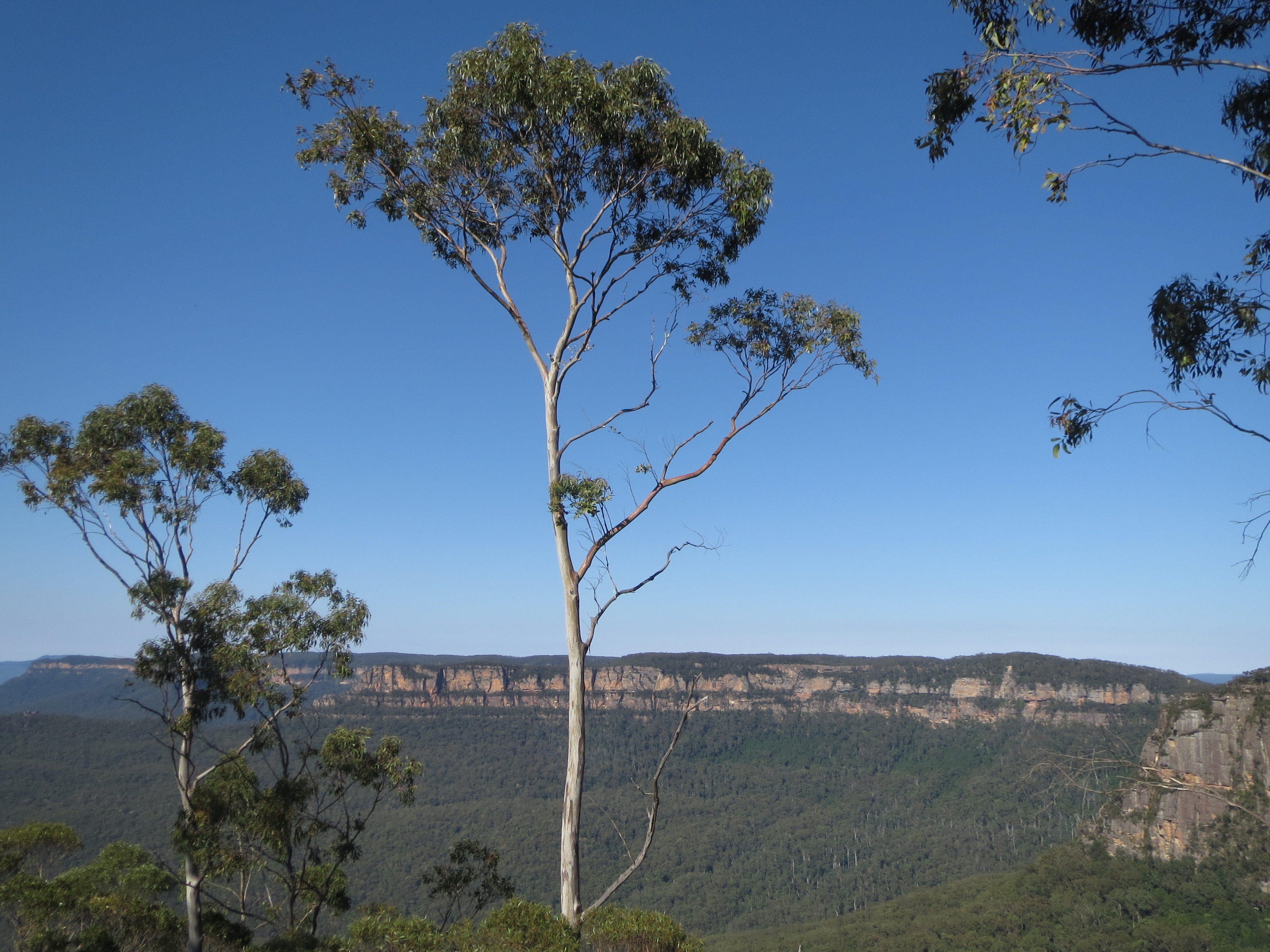On my last day at Varuna in the Blue Mountains, I am up before the cockatoos.
I have been working on an essay about my Nana who died last year. She was a big supporter of my traveling ways. She also loved to garden and could be found into her late 80s picking vegetables, or turning soil outside her tiny stucco house in Winnipeg. She never came to Australia so I want to take a walk with her, absorb the landscape and see what she might see.
We walk along streets lined with European trees — copper beech and oak and pine and even birch — then turn away from the tourist signs and take a paved path along the top of the sandstone cliffs draped with blue mountain ash. We’ll end up at the same place as the tourists, but it will be a quiet walk in the shade.
Nana wouldn’t have liked the brittle-dry heat of summer here under the hissing screams of the yellow monday cicadas. Apparently these cicadas aren’t even as noisy as the razor grinder on the coast, or Sydney’s double drummer. Nana would have preferred the quieter cool days, soft speckles of rain kissing her cheeks.
What would she think of this mixture of northern hemisphere foliage and native trees and plants? Would she see the beauty that I see in the spindly forests of the eucalypts, even though they’re so different to her favourite looming spruce tree?
Nana knew Canadian plants and finally I can tell her, in my mind, a little about what we’re seeing: how the blue mountain ash and the black ash are some of the dominant trees in Katoomba. How settlers introduced flowers and trees from their homelands. And look! You can see why the Blue Mountains are called blue — it’s the light playing with the hazy mist that floats off the eucalypts.
We arrive at Echo Point. We have beaten the first tour bus although not the first tourists. The chatter of currawongs mingle with Italian, Japanese and Spanish.We stand side by side.
We imagine this view before the concrete lookouts and camera-clad tourists. I tell Nana the valleys and gorges were carved out by weather and ancient rivers and the Dreaming Stories of The Three Sisters who were turned to stone. Now the sisters watch over the traditional land of Aboriginal peoples from this area.
When we lean over the railing at Echo Point and look straight down we see agapanthus hanging off the cliffs beside eucalypts. Invaders hanging out with the natives.
I don’t know enough about native, indigenous and introduced plants but I sense the story of migration and movement in this land can be told through the trees and bushes and flowers.
And there’s more. Somewhere north of us in The Greater Blue Mountains, which is one-third the size of Belgium, the wollemi pine (Wollemia nobilis) was discovered in 1994. The tree is called a living fossil. Dinosaurs could have munched on wollemi leaves as they roamed through the Gondwana rainforest.
When we get back to Varuna, we admire the brilliant reds and blue of the crimson rosella, chomping on apples still hanging on the tree.
The ”cockies’’, Aussie slang for cockatoo, are showing off again: staging fly-bys and hanging upside down from the eaves. I think Nana would have enjoyed them. She liked people with character.





